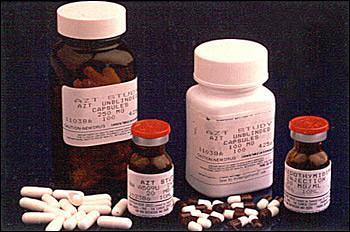Abstract
OBJECTIVES: Successful highly active antiretroviral therapy (HAART) is usually associated with a rapid decline in HIV plasma RNA levels and a gradual increase in CD4 T cells. We examined whether changes in cytokine production and profile precede other immunological changes and whether these might occur in temporal association with plasma HIV RNA changes.
DESIGN AND METHODS: Eleven HIV-1-infected patients were enrolled into a prospective cohort study; eight patients were naive to antiretroviral therapy. Blood samples were collected pre-therapy (week 0) and at 1, 2, and 3 weeks post-initiation of therapy.
RESULTS: All 11 patients enrolled remained on triple HAART for 1 week, eight for 2 weeks, and six for > or = 3 weeks. When compared to week 0, these patients had a > or = 2-log10 decline in HIV plasma RNA levels and/or a decline to < or = 400 copies/ml by week 3 of therapy (p = 0.004). The numbers and percentages of CD4 and CD8 T cells, and the percentage of naive, memory, and activated T cells did not change significantly between weeks 0 and 1 or 0 and 3. Of all the immune parameters examined only: the percentage of CD4 T cells spontaneously producing tumor necrosis factor (TNF)-alpha (median, 2.4 versus 0.5% P = 0.025); the percentage of CD8 T cells spontaneously producing TNF-alpha (median, 0.6 versus 0.2% P = 0.037); and the percentage of CD3 T cells spontaneously producing interleukin-4 (median, 1.8 versus 0.8% P = 0.004) changed significantly between weeks 0 and 3.
CONCLUSIONS: In these patients, decreases in the percentage of T cells spontaneously producing TNF-alpha or interleukin-4 preceded changes in CD4 T cells. If confirmed by others, these observations may be useful as early predictors of response to and early failure of HAART.
Lew E, Gallagher L, Kuehnert M, Rimland D, Hubbard M, Parekh B, Zell E, Jarvis W, Jason J
AIDS 2001 Sep;15(13):1665-70
PMID: 11546941
Lew-2001-Intracellular-cytokines-and-response-to-Rx